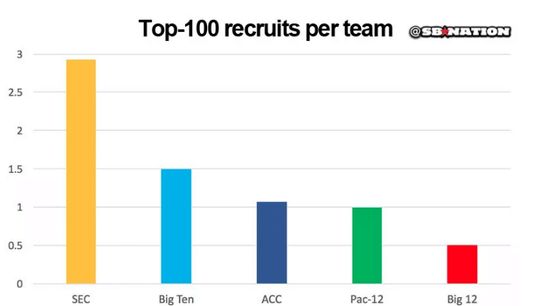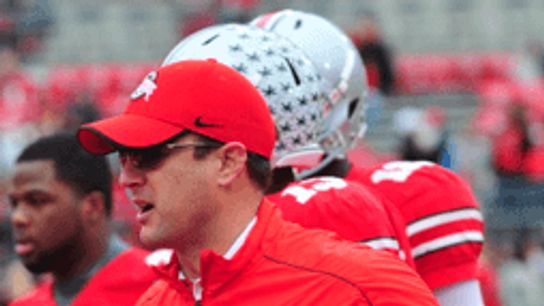Tom Herman is the most important figure in the Big 12 moving forward, and it isn't particularly close.
With that premise established, let's walk backward to explain how we got a point where a football coach yet to lead his first game in the Big 12 could be the key to whether the entire league survives a decade from now.
NFL Combine numbers were released on Monday, and this year's event once again represents a game of One Of These Is Not Like The Other.
Even on a per school basis, the Big 12 still will still only send half as many players as next-to-last Power 5 conference.
It would be irresponsible to draw conclusions based on the number of invitees to a single Combine, but this is just another data point on what has become a long-term trend. The Big 12 was tied for last among Power 5 leagues in the 2016 NFL Draft, and dead last in 2015 and 2014.
The Big 12 no longer exports a high number of top-level talent because it no longer imports blue-chip players at a rate comparative to its peers.
Here were the numbers on Signing Day in 2016:

The Big 12 also did not sign a single top-10 class in 2015.
It's not hard to pinpoint the genesis of this problem. The Big 12 has always been especially dependent on Texas to supply the entire league's talent base, while at the same time the conference has never been more open for business to foreign invaders. The league signed four of the top 20 and zero of the top 10 Lone Star State players in 2017, and only eight of the top 20 in 2016.
Compare that to, to pull a random year out of a hat, the 2007 class, when the Big 12 inked 15 of the top 20 players in Texas.
Any Big 12 resurgence starts with winning back the state of Texas, simply because the Big 12 no longer has any other options. Unless the entire state of Georgia migrates to Oklahoma and Kansas and then encapsulates itself inside its own wall, the Big 12 has no path back to relevance other than to win back the state of Texas.
And that path begins and ends with the University of Texas.
Eleven of those 15 Big 12 signees in 2007 were UT recruits. Even in 2016, seven of the eight Top 20 Texas recruits signed with the Longhorns. Oklahoma signed the nation's No. 8 class this month, but even the Sooners' experienced limited success in Texas -- pulling 10 of their 27 signees from Texas, though only three ranked in the state's top 25.
The Sooners have carried the conference for the bulk of this decade. Oklahoma State, TCU, Baylor, Kansas State and West Virginia are playing as well as those programs can reasonably expect to play over a multi-season sample. And yet the Big 12's most recent national championship (2005) and national title game appearance (2009) still belong to Texas.
The Longhorns have to succeed for the conference to compete with the rest of the Power 5, which means Herman must win -- in living rooms and on the field -- in Austin.
If not, the consequences for both Texas and the entire Big 12 could be drastic.
The Big 12's Grant of Rights agreement expires in 2025. If Herman fails at Texas, it's not hard to envision a scenario in which an extended down period for the conference forces Texas to explore its options when its obligations to the Big 12 end -- even though Texas's own failure may be the primary source of those problems. If that logic sounds backward, frustrating and self-serving, welcome to life in the Big 12.
To start winning at the level of its Power 5 peers, the Big 12 must start recruiting like them. To recruit like its Power 5 peers, the Big 12 must win back the state of Texas. To win back the state of Texas, the University of Texas has to end its 7-year drought. To end UT's 7-year drought, Tom Herman must win big and win quickly.
Otherwise, the consequences for the Big 12 may be fatal.
No pressure, Coach.
